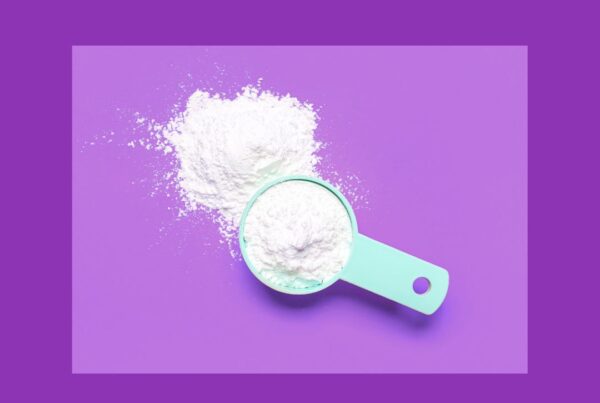What is HRT?
As you pass through perimenopause and menopause, your body’s ovarian hormone levels fluctuate and eventually fall. For many women this results in bothersome symptoms and for one in five women, those symptoms have a heavy impact on their quality of life and day-to-day functioning.
This phase of a female’s life is of course very natural but some women are severely disrupted by these changes, and some face additional health risks because of them.
Modern medicine offers us many options to avoid mother nature’s time-course, for example antibiotics, contraception and joint replacement surgery. We also use hormone replacement for the thyroid gland and the hormone insulin for diabetes. Hormone replacement therapy (HRT) is simply another option to treat symptoms of the perimenopause / menopause transition.
Just to recap, female ovarian hormones include oestrogen, progesterone and testosterone.
This is what happens to them over time:
- Progesterone falls due to irregular ovulation (releasing of eggs).
- Oestrogen becomes erratic and relatively unbalanced.
- Oestrogen falls as ovulation stops.
- Oestrogen and progesterone now remain stable but at low levels
- Testosterone falls gradually from the age of 30.
HRT should be tailored according to a person’s symptoms, health concerns, risks and preferences. One size does not fit all. The hormones we can replace include oestrogen, progesterone and testosterone. They come in various forms including tablets, gels, creams and patches. HRT can be used to have an effect on the whole body or just locally for example on vaginal and bladder tissues. HRT can be body-identical which means the chemical structure is exactly the same as our own body makes or non-body-identical where the structure is similar but has the same type of effect on our body as our natural hormone. Body-identical hormones are safest taken as prescription medication as compounded formulations are not regulated and are often very expensive.
The different types of HRT
Oestrogen
Many, but not all symptoms of the menopause are caused by low levels of oestrogen – flushes, sweats, dryness of skin and vagina, bladder problems, joint aches and pains. It makes sense therefore, that oestrogen replacement helps those symptoms
If you have a uterus it is important that your oestrogen replacement use is counterbalanced by taking a form of progesterone which will protect the endometrial lining.
Oestrogen formulated as creams or pessaries (like a vaginal tablet) can be applied directly to the vagina for vaginal dryness and urinary symptoms such as incontinence and recurrent urinary tract infections. It may also have a positive impact on your sex life by reducing vaginal dryness. It can be used alone or in conjunction with body wide oestrogen. Most of the effect of vaginal oestrogen occurs locally but a small amount is absorbed into your system. You do not need to take progesterone to counterbalance its use if you are using vaginal oestrogen alone. It is also likely to be very safe even in someone who has had breast cancer (always check with your doctor).
Progesterone
Falling progesterone is responsible for many of the symptoms of the perimenopause both through a loss in its direct effect and by leaving oestrogen unbalanced – anxiety, poor sleep, flushes and sweats, migraines, heart palpitations, irregular and heavy bleeding.
Progesterone refers to the actual chemical that is made in your body. Fortunately we now have body-identical progesterone which can be taken as a capsule. ‘Progestogen’ refers to any progesterone-‘like’ hormone that has similar effects to progesterone but is not body-identical. These different forms of progesterone have different side effect profiles and varying impacts on hormonal symptoms.
Progesterone is given in various ways. In perimenopause, it is usually given only in the second half of your cycle to help make your bleeding become regular, reduce your flow, and to counterbalance the effect of oestrogen. Sometimes it is used alone and sometimes in conjunction with daily oestrogen. You will get a monthly bleed when used in this way.
When you are in established postmenopause, this regime switches to a daily dose of progesterone and oestrogen throughout the month. For females with no uterus it is possible for you to take oestrogen alone, however progesterone is one of your key hormones and it has benefits beyond simply protecting your endometrial lining. Many women even without a uterus will choose to take progesterone and oestrogen in combination.
Certain symptoms of the menopause such as migraine headaches may require different tailored regimes of hormone therapy.
Mirena IUD*
This IUD is not HRT but is often used in perimenopause. It is coated in progestogen and can be inserted into your uterus in your doctor’s office and left in place for five years. It provides excellent contraception and also controls heavy menstrual bleeding which is perfect for many perimenopausal women. Given it acts locally on the endometrium it has fewer side effects compared to other non-body-identical progestogens. A small number of females who are very sensitive to progesterone and in particular non-body-identical progestogens may still experience mood disturbance even with the Mirena IUD.
Progesterone only mini pill*
This can be a great choice for some perimenopausal women as it can help control heavy bleeding and is usually enough for contraception.
Testosterone
Testosterone levels drift down slowly from a peak around 30 years of age. Testosterone is sometimes prescribed for low energy and problems of sexual function including low libido, inability to be aroused or achieve orgasm and works very well for these symptoms. Typically testosterone would be considered if oestrogen replacement alone didn’t do the trick.
Testosterone is applied as a cream and care needs to be taken not to overdose. Your blood levels should be checked to avoid side effects of overdosage which include unwanted facial hair growth (as if we needed any more of that), hair loss from your head, acne, and insulin resistance which is associated with poor metabolic health and abdominal weight gain.
Tibolone
Tibolone is a hormone-like chemical derived from the Mexican yam and has weak effects of all three main ovarian hormones – oestrogen, progesterone and testosterone. It can be used in postmenopausal women but is currently recommended that this be limited to a period of five years due to the possibility of increased risk of heart disease and stroke. It can have side effects of acne and increase facial hair but these are not common. It is however very simple to use – one tablet every day with no variation in dosage. It is great for mild to moderate menopausal symptoms and protects bones just like oestrogen does.
Combined oral contraceptive pill*
The OCP can be used for women in perimenopause if they require control of heavy bleeding and irregular cycles and also contraception. It can also be helpful for mood changes. The OCP generally contains very high levels of hormone in order to suppress your natural fertility cycle. Your body shuts down its own hormone production and relies on that coming from the pill. One of the problems with using the pill in perimenopause is the risk of stopping it too late or when your own ovaries have stopped working. This will feel like your hormones plummeting off a cliff and your menopausal symptoms can be quite sudden and severe. It’s a great strategy to start tapering off the use of the pill and use alternative contraception in your 40s. This will prepare you much better for the upcoming hormonal changes which are chaotic enough.
All OCP preparations contain non-body-identical progesterone and many of the side effects relate to this component of the pill. Only a few contain body-identical oestrogen (all the others are non-body-identical). There are now low dose formulations suitable for perimenopausal women.
- These are not considered ‘HRT’ but we include them here as they are hormonal preparations often helpful for perimenopausal women.






